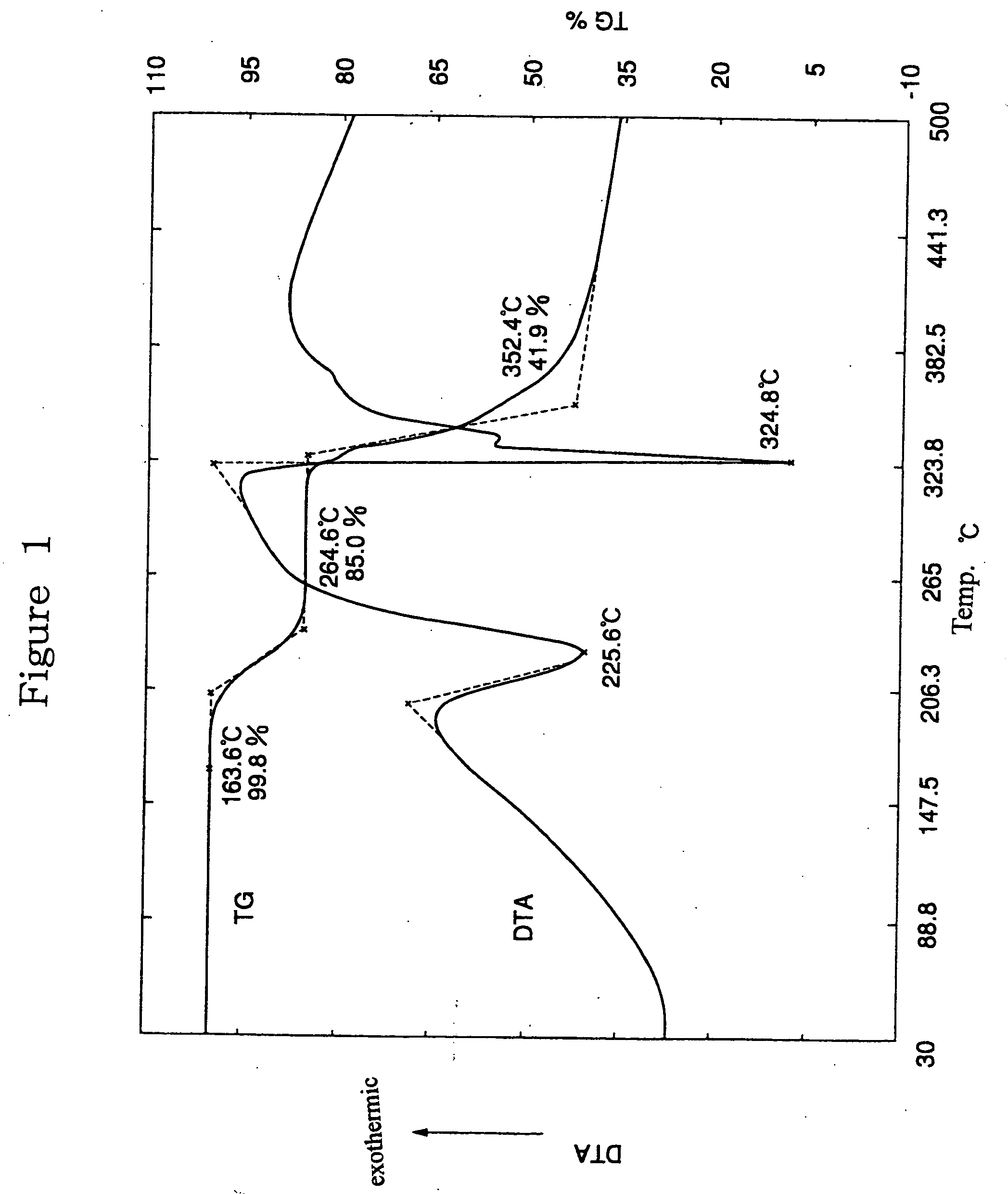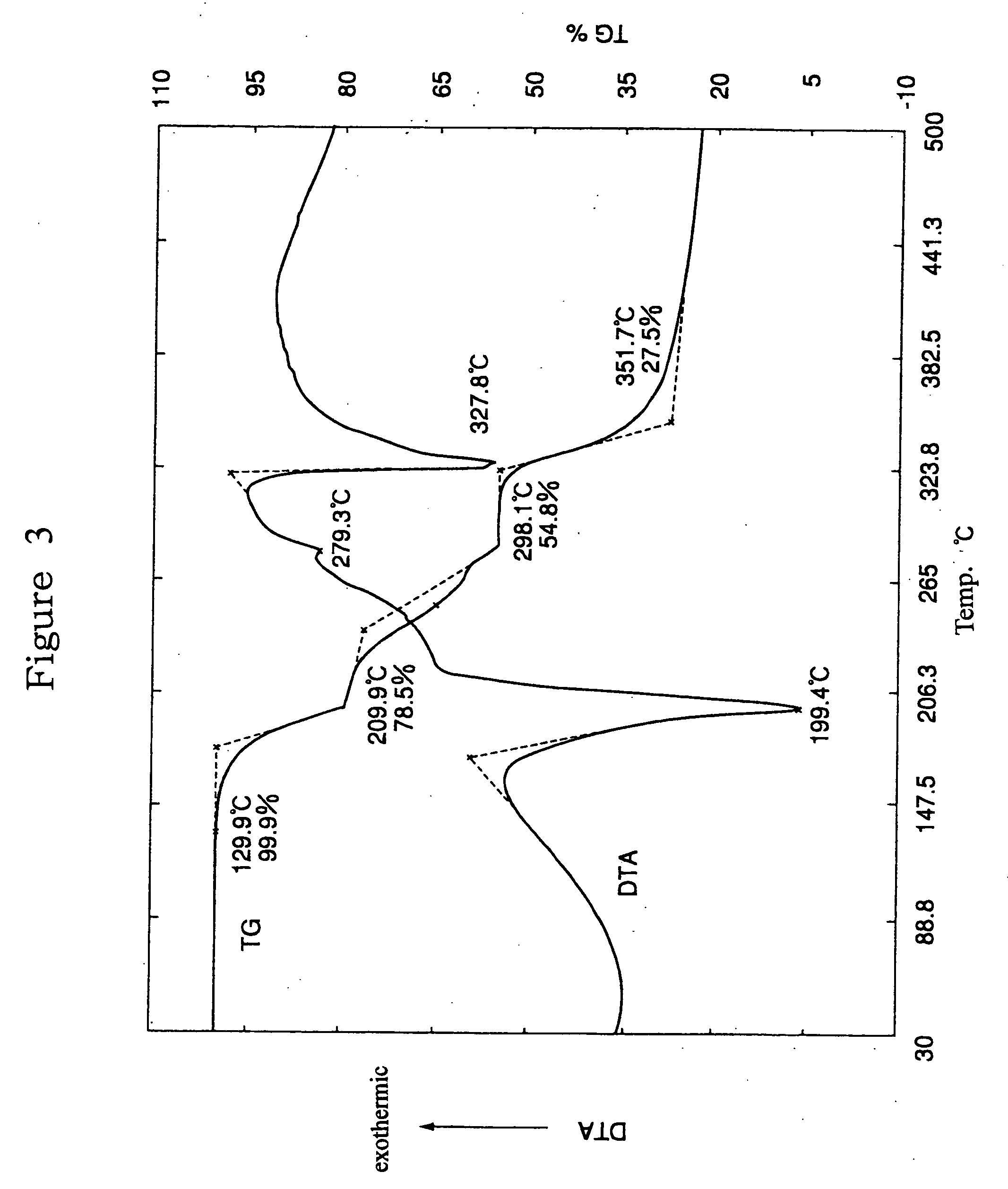Curatives for epoxy resin, curing accelerator, and epoxy resin composition
a technology of curing accelerator and epoxy resin, which is applied in the field of epoxy resin compositions and to epoxy resin curing accelerators, can solve the problems of increasing the viscosity of the composition, not being economical from operation, and not being able to achieve the effect of increasing the pot life of the curative and curing accelerator, improving the curability of the curative, and being easy to handl
- Summary
- Abstract
- Description
- Claims
- Application Information
AI Technical Summary
Benefits of technology
Problems solved by technology
Method used
Image
Examples
example 1
Manufacturing of Clathrates
[0120] Clathrates were prepared by using various curatives, curing accelerators and tetrakisphenol-containing host compounds according to either the method (1) or the method (2) as described below. (1) When a curative or a curing accelerator is in liquid sate under a room temperature, 10 parts by weight of either the curative or the curing accelerator was added with 1 part of a host compound and was subsequently stirred for 1 to 120 min. under a temperature of from 25 to 100° C., and the mixture was then allowed to stand for 1-48 hours to precipitate the crystals. After taking out the crystals by filtration, the crystals were dried under reduced pressure at a temperature of from a room temperature to 80° C. to obtain the clathrate according to the present invention. Whereas, when a curative or a curing accelerator is in solid state, it was mixed with a host compound at a specific mole ratio, and the mixture was then kneaded in a mortar for one hour to obt...
example 2
Measurement of Prolonged Pot life of Resin Compositions (Part 1)
[0163] To 100 parts of a base resin (uncured resin) UVR-6410 (Trade name, Manufactured by Union Carbide Co., Ltd.), was added 13.7 parts (corresponding to 4.0 parts by weight as 2MZ) of the inventive curative, sample No. 32, described in Table 1. The mixture was kneaded for 10 min. at 25° C. and was further allowed to stand for 20 min. at 25° C. Then, the initial viscosity of the resin composition prepared was measured. The resin composition was then placed under 25° C., and periodical change in viscosity was measured. The viscosity measurement was accorded to JIS K-6833-1994, and B8R-type rotational viscosity meter (Manufactured by Tokyo Keiki) was used for the measurement. The results of the measurement are shown in Table 4 and FIG. 48. When prolonged pot life of the resin composition is defined as the time requiring for the viscosity of a resin to be the double value of the initial viscosity value, the prolonged pot...
example 3
Measurement of Prolonged Pot Life of Resin Compositions (Part 2)
[0166] To 100 parts of a base resin (uncured resin) UVR-6410 (Trade name, Manufactured by Union Carbide Co., Ltd.), was added 11.2 parts by weight (corresponding to 4.0 parts by weight as 2E4MZ) of the inventive curative of sample No. 24 described in Table 1. Then, the viscosity of the resulting resin composition was measured according to the procedure as described in the example 2. The results of the measurement are shown in Table 5 and FIG. 49. When using the inventive curative of sample No. 24, the prolonged pot life, which is the time required for the viscosity of the resin composition to be a double value of the initial viscosity value, was found to be 180 hours.
PUM
| Property | Measurement | Unit |
|---|---|---|
| temperature | aaaaa | aaaaa |
| temperature | aaaaa | aaaaa |
| temperature | aaaaa | aaaaa |
Abstract
Description
Claims
Application Information
 Login to View More
Login to View More - R&D
- Intellectual Property
- Life Sciences
- Materials
- Tech Scout
- Unparalleled Data Quality
- Higher Quality Content
- 60% Fewer Hallucinations
Browse by: Latest US Patents, China's latest patents, Technical Efficacy Thesaurus, Application Domain, Technology Topic, Popular Technical Reports.
© 2025 PatSnap. All rights reserved.Legal|Privacy policy|Modern Slavery Act Transparency Statement|Sitemap|About US| Contact US: help@patsnap.com



